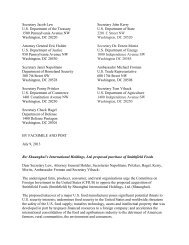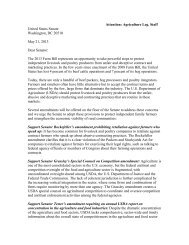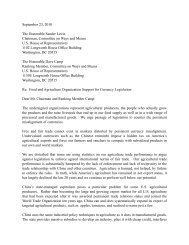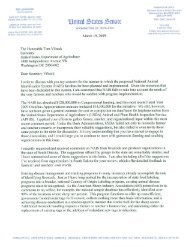Exhibit 8, 100416 Brazil FMD Risk Evaluation - R-Calf
Exhibit 8, 100416 Brazil FMD Risk Evaluation - R-Calf
Exhibit 8, 100416 Brazil FMD Risk Evaluation - R-Calf
Create successful ePaper yourself
Turn your PDF publications into a flip-book with our unique Google optimized e-Paper software.
10. Diagnostic laboratory capacity<br />
The laboratory system, including test procedures for the diseases under evaluation, quality assurance<br />
measures, and official oversight procedures, must be clearly documented to provide confidence in<br />
disease surveillance activities and the ability to quickly detect and confirm a disease outbreak. This<br />
section explains the laboratory capabilities of Santa Catarina for diagnosing and detecting <strong>FMD</strong>,<br />
CSF, SVD, and ASF.<br />
General information<br />
<strong>Brazil</strong>’s Ministry of Agriculture has three laboratories that perform diagnostic tests for <strong>FMD</strong>. These<br />
laboratories are located in Pedro Leopoldo, Pará, and Recife. The PANAFTOSA laboratory in Rio<br />
de Janeiro is the reference laboratory. The laboratory in Recife performs CSF serological testing,<br />
and SVD and ASF testing if necessary.<br />
<strong>Brazil</strong>’s laboratories perform the following routine <strong>FMD</strong> tests:<br />
Virus typing: Complement fixation and ELISA test (double antibody sandwich ELISA).<br />
Assessment of antibody level: ELISA test in liquid phase (blocking ELISA) and serum<br />
neutralization.<br />
Detection of viral activity through the anti-virus infection associated antigen (VIAA),<br />
ELISA 3ABC, and EITB tests.<br />
Identification of the virus in esophageal-pharyngeal fluid through the Probang test.<br />
Four State laboratories are part of a network of authorized laboratories that perform certain <strong>FMD</strong><br />
diagnostics to admit animals into the export region and for serological monitoring. The laboratories<br />
perform EITB and VIAA tests and began ELISA 3ABC testing in 2002. Only MAPA laboratories<br />
carry out diagnostic activities in response to suspected outbreaks of vesicular diseases and as a part<br />
of viral activity studies to implement free zones.<br />
The 2002 site visit team visited three of the abovementioned laboratories [6] and reported the<br />
following:<br />
Diagnostic laboratory in Pedro Leopolodo, Minas Gerais:<br />
This Federal laboratory had a biosafety level (BSL) 2 facility for bacteriology<br />
(brucellosis and TB testing) and chemistry laboratory.<br />
The staff had about 94 people.<br />
Behind the BSL-2 facility, a new BSL-3 laboratory was under construction.<br />
The laboratory was about 2,500 square meters in size and had nine laboratories with a<br />
double airlock and a separate air zone for each laboratory. There was a separate animal<br />
facility with a separate entrance.<br />
The facility had three rooms for large animals with an individual shower for each room,<br />
and three rooms for small animals with a common shower in the hallway.<br />
The necropsy room had two oversized autoclaves for decontaminating carcasses.<br />
HEPA filters and the mechanical room were located on the third floor.<br />
The basement had three 3,000-gallon tanks for decontaminating effluent by boiling at<br />
100C.<br />
Animal Products Analysis Laboratory (LAPA/Recife), Pernambuco<br />
APHIS <strong>Evaluation</strong> of the Status of the <strong>Brazil</strong>ian State of Santa Catarina 55











